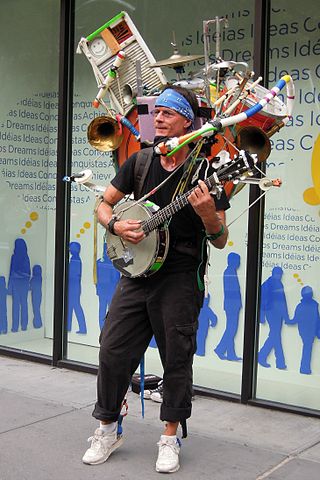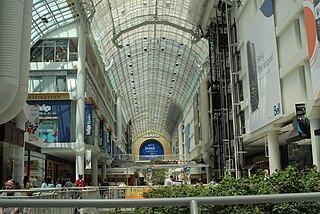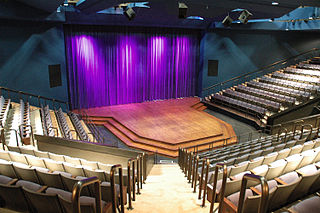This article needs additional citations for verification .(September 2007) |
This is a list of locations where busking is known to happen on a regular basis. They tend to be low motor traffic places.
This article needs additional citations for verification .(September 2007) |
This is a list of locations where busking is known to happen on a regular basis. They tend to be low motor traffic places.
This article needs additional citations for verification .(September 2007) |
This article needs additional citations for verification .(June 2017) |

Street performance or busking is the act of performing in public places for gratuities. In many countries, the rewards are generally in the form of money but other gratuities such as food, drink or gifts may be given. Street performance is practiced all over the world and dates back to antiquity. People engaging in this practice are called street performers or buskers in Ireland. Outside of New York, buskers is not a term generally used in American English.

An underground city is a series of linked subterranean spaces that may provide a defensive refuge; a place for living, working or shopping; a transit system; mausolea; wine or storage cellars; cisterns or drainage channels; or several of these. Underground cities may be currently active modern creations or they may be historic including ancient sites, some of which may be all or partially open to the public.

A shopping center, shopping centre or shopping mall, also called a shopping complex, shopping arcade, shopping plaza or galleria, is a group of shops built together, sometimes under one roof.

In theatre, a thrust stage is one that extends into the audience on three sides and is connected to the backstage area by its upstage end. A thrust has the benefit of greater intimacy between performers and the audience than a proscenium, while retaining the utility of a backstage area. Entrances onto a thrust are most readily made from backstage, although some theatres provide for performers to enter through the audience using vomitory entrances. A theatre in the round, exposed on all sides to the audience, is without a backstage and relies entirely on entrances in the auditorium or from under the stage. As with an arena, the audience in a thrust stage theatre may view the stage from three or more sides. Because the audience can view the performance from a variety of perspectives, it is usual for the blocking, props and scenery to receive thorough consideration to ensure that no perspective is blocked from view. A high backed chair, for instance, when placed stage right, could create a blind spot in the stage left action.

Pedestrian zones are areas of a city or town reserved for pedestrian-only use and in which most or all automobile traffic is prohibited. Converting a street or an area to pedestrian-only use is called pedestrianisation.

Sparks Street is a pedestrian mall in Ottawa, Ontario, Canada. It was a main street in Ottawa that was converted into an outdoor pedestrian street in 1967, making it the earliest such street or mall in Canada.

The ByWard Market, is a retail and entertainment district in the downtown core of Ottawa, Ontario, Canada. It is located east of the government and business district. The Market district includes the market buildings and open-air market along George, York, ByWard, and William street.

Pedestrian malls, also known as pedestrian streets, are the most common form of pedestrian zone in large cities in the United States. They are typically streets lined with storefronts and closed off to most automobile traffic. Emergency vehicles may have access at all times and delivery vehicles may be restricted to either limited delivery hours or entrances on side streets.
A festival marketplace is a European-style shopping market in the United States. It is an effort to revitalize downtown areas in major US cities begun in the late 20th century.

The Third Street Promenade is a pedestrian mall esplanade, shopping, dining and entertainment complex in the downtown area of Santa Monica, California which originally opened as the Santa Monica Mall on November 8, 1965. It is considered a premier shopping and dining district on the Westside and draws crowds from all over the Greater Los Angeles area. Due to easy access to Downtown Los Angeles via the Big Blue Bus rapid transit service, E Line's terminus station and the Pacific Coast Highway-Santa Monica Freeway Interstate, the neighborhood's north-south thoroughfares connecting to Muscle Beach, Venice Canal Historic District, Marina del Rey, Ballona Wetlands and Los Angeles International Airport, and its proximity to historic U.S. Route 66, Santa Monica Pier, Palisades Park, Tongva Park, Santa Monica State Beach and the Pacific Ocean coupled with Los Angeles's mild mediterranean climate, it is also a popular tourist destination.

The 16th Street Mall is a pedestrian and transit mall in Denver, Colorado. The mall, 1.25 miles long, runs along 16th Street in downtown Denver, from Wewatta Street to the intersection of 16th Avenue and Broadway. The intricate granite stone sidewalks and streets were designed by architect I.M Pei to resemble the scale pattern of the western diamondback rattlesnake. It is home to over 300 stores, 50 restaurants, and the Denver Pavilions shopping mall.
Miller's Department Store was a chain of department stores based in East Tennessee.
Busking days are events organised by councils, municipalities, community groups or other organisations to encourage busking in the town, city or other location on a specific day or number of days in a year. Many busking days have become established events, occurring yearly. Some busking days have transformed into street entertainment festivals where the acts are booked and paid an appearance fee or paid an appearance fee and also allowed to 'hat' the audiences. Hatting being the traditional means that acts receive payment for their performances.

Natalia 'Saw Lady' Paruz is a New York City-based musical saw player, bell ringer, busker and film maker. She was the founder and director of the annual Musical Saw Festival in New York City and ran it for 11 years. She also organized the musical saw festival in Israel. She was a columnist of the 'Saw Player News' and a judge at international musical saw competitions. She was also a judge for Music Under New York and for Little Island at Pier 55.
A buskers festival is any festival in which street-shows or street-performers of music, theater, dance, juggling, etc., play a prominent role.

Buskerfest is the name of a traveling festivals of buskers—street performers. Buskers in the festivals visit a series of host cities each summer. Host cities often shut down one of more blocks of a prominent downtown street for the festival.
A Shakespeare festival is a theatre organization that stages the works of William Shakespeare continually.

Abby Roach, known by her stage name Abby The Spoon Lady, is an American musician, former radio personality, and free speech activist. Her music focuses on the American roots genre.
{{cite web}}: Cite uses generic title (help)